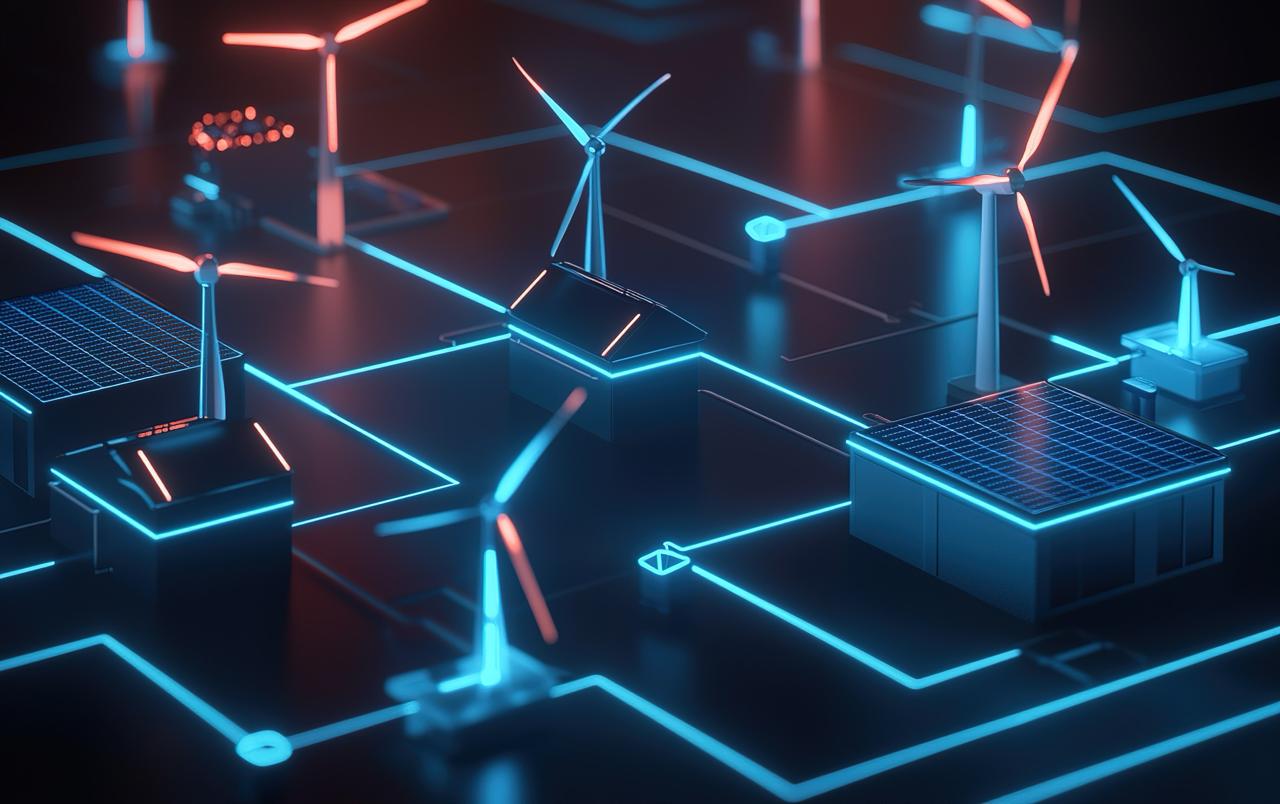Today blockchain is a key driver of transformation in the energy industry. It opens up new opportunities for digitising networks, increasing the transparency of operations and optimising energy flows, making the system more stable and efficient.
The technology allows companies and private users to accurately track energy production and consumption, create decentralised markets and implement innovative models of green energy trading. Blockchain accelerates processes, reduces risks and paves the way for the energy of the future, where efficiency, transparency and environmental responsibility are becoming the standard.
Key industry players are actively leveraging blockchain opportunities.
This blog post examines in detail the intersection of blockchain and energy and demonstrates why this technology can become the basis of a smart, clean and sustainable energy system of the future.
Market and History Overview
Blockchain’s rise is inseparable from the conversation about energy. From the moment Bitcoin emerged in 2009, concerns arose about blockchain’s energy consumption. In its early days, mining operations were relatively small-scale. But as blockchain use grew, so did its appetite for electricity.
This mirrors earlier energy moments in history. Consider how the world responded to the oil shocks of the 1970s times of scarcity that forced innovation. Today, blockchain is not causing an energy crisis, but it is a wake-up call. Proof-of-work mining, used in early blockchains like Bitcoin, consumes vast amounts of power. As of recent estimates, some blockchain networks rival small countries in energy use.
Yet the energy sector is also where blockchain may offer solutions. The emergence of energy blockchain platforms for smart grids, renewable tracking, and peer-to-peer energy trading has reshaped the market. Today’s blockchain energy market is valued in the billions, with global utilities, startups, and governments testing its potential. The focus now is shifting from energy consumption to energy optimization and blockchain could lead the charge.
A Surprising Power Drain
Blockchain technology is known for its high level of energy consumption. Today, blockchain is also used in other areas, such as supply chains and digital identification, providing secure and decentralised data verification.
The energy costs for the operation of these systems are enormous and comparable to the consumption of a large energy-intensive facility that operates continuously. This process, known as mining, involves many computers competing to solve complex mathematical problems and confirm new transactions, which requires constant operation of equipment, high-speed Internet and cooling systems. This race for consensus demands specialized hardware, continuous high-speed internet, and powerful cooling systems to prevent overheating.
The result is massive electricity consumption. Mining operations run continuously, using power on a scale comparable to small countries. As blockchain adoption increases, there is growing pressure to develop more sustainable and energy-efficient solutions to support its expansion.

How Much Energy Does Blockchain Really Use?
The blockchain’s energy footprint, especially from cryptocurrency mining, is extremely large. If we consider miners as a country, their energy consumption is comparable to Austria. CO2 emissions can be matched with entire cities, such as Las Vegas or Hamburg.
Because of these energy demands, miners have flocked to regions with cheap electricity like Iceland with its geothermal resources, certain provinces in China with excess hydro power, and small towns across the U.S. Some areas faced strain on their power grids; one town in upstate New York even paused new mining operations due to rising demand.
While some argue the energy estimates are exaggerated, even conservative figures reveal a hard truth: blockchain, built to streamline transactions, currently runs on a model that’s anything but efficient.
Key Benefits of Using Blockchain in the Energy Sector
- Transparent Operations
The blockchain records each transaction in a way that cannot be changed or deleted. This provides energy companies, regulators and consumers with full transparency: it is possible to track in real time how energy is produced, traded and used. Such openness increases trust, reduces the risk of disputes and stimulates honest interaction of all market participants. - Smarter Data Management
Instead of disparate or outdated systems, the blockchain offers a single digital ledger where data on generation, consumption and network operation is stored and available in real time. This increases transparency and speeds up the decision-making process. - Lower Operational Costs
By eliminating intermediaries and automating processes with smart contracts, blockchain helps energy companies significantly reduce costs. Invoicing, payments and trading operations are performed automatically, reducing the amount of paperwork and minimizing the risk of errors. - Enhanced Security
The energy industry operates with confidential data, and blockchain provides reliable protection for their data. Decentralised architecture ensures that even if one node is compromised, the system as a whole retains stability, which significantly complicates unauthorised access and forgery of information. - New Ways to Invest
Blockchain allows fractional ownership of energy assets. That means individual investors can invest in things like solar parks or wind farms through tokenized platforms, opening up fresh funding options for renewable projects. - Support for Peer-to-Peer Energy Trading
With blockchain, individuals and small producers can sell excess energy like solar power directly to others on the grid, without going through a utility company. - Modernization Through Digitalization
Blockchain contributes to the digitisation of outdated energy infrastructure, providing real-time monitoring, integration of smart grids and the creation of more flexible and efficient energy systems.
Key Applications of Blockchain in the Energy Sector
In the context of the movement of the energy industry towards decentralisation, decarbonisation and digital transformation, blockchain is becoming an important tool for change. By providing transparency, automation and trust without the need for centralised control, this technology transforms the processes of energy production, trade, management and consumption. Below are the most effective examples of blockchain application in the energy sector.
1. Energy Assets Tokenization
Blockchain allows energy infrastructure — solar stations, wind turbines, and batteries — to be digitized by dividing them into tokens. These tokens represent fractional ownership of physical assets and can be bought or traded by anyone.This model democratises investments, opening access to energy projects to both private investors and major players.
For example, a solar farm can issue tokens tied to electricity generation or future income. Investors profit from the sale of energy, and it becomes easier for the project to attract capital. Similar solutions are already being implemented by platforms like VeChain and SolarWise, making investments in clean energy more transparent, liquid and affordable.
2. Peer-to-Peer (P2P) Energy Trading
Households and enterprises producing excess solar or wind energy can directly sell it to neighbouring consumers without the participation of traditional utilities.
P2P platforms such as PowerLedger and Brooklyn Microgrid use the blockchain to capture transactions in real time securely. Smart contracts automatically fulfil transactions subject to conditions, ensuring transparency and simplicity of the process.
This model stimulates local energy production and consumption, increases network stability and reduces transmission losses.
3. Smart Grid Management
Smart grids integrate digital technologies into the traditional energy grid to allow real-time communication between energy producers, consumers, and distributors. Blockchain adds another layer of intelligence by securely recording data on production, storage, and consumption across decentralized sources.
With blockchain, utilities can better manage supply and demand fluctuations by monitoring the flow of energy at the micro level. Platforms like Combinder are already using blockchain to connect distributed energy resources (DERs), such as rooftop solar panels and EV chargers, into a single management system optimizing energy delivery and reducing congestion.
4. Renewable Energy Certificates (RECs)
Blockchain simplifies the issuance, tracking, and trading of RECs by creating an immutable and verifiable record of renewable energy production. Platforms such as Energy Web and IBM’s blockchain REC pilot projects with utility companies reduce the risk of fraud, reduce administrative costs and ensure the uniqueness of each certificate. This contributes to the achievement of global climate goals and strengthens consumer confidence in sustainable development claims.
5. Carbon Credit Trading
Carbon credits allow companies to offset CO2 emissions, but traditional markets face problems of transparency, high fees and the risk of double-entry.
Blockchain platforms such as KlimaDAO and Toucan tokenise carbon credits, allowing them to be tracked, bought and sold on decentralised platforms. Each credit is tied to a proven source of emissions reduction, ensuring accountability and encouraging company participation in environmental programs.
6. Supply Chain Management in Energy
The energy industry depends on complex global supply chains of critical components such as batteries, turbines and solar panels. Quality control, compliance and ethical transparency remain challenging tasks.
Blockchain provides full traceability of materials from production to installation, and also allows you to track certificates and compliance with ESG standards. This increases efficiency, reduces the risk of fraud and contributes to the sustainable development of infrastructure.

7. Regulatory Compliance and Auditing
Environmental and operational standards require accurate reporting and transparent audit. Blockchain provides an immutable data register available to regulators and auditors in real time. Smart contracts and automated information registration optimise reporting processes, prevent falsification and reduce manual audit time, making regulatory control more effective.
8. Energy Certification, Carbon Offsetting, and Sustainability Tracking
Blockchain serves as a reliable environmental reporting tool. It allows companies, states and consumers to confirm the use of renewable energy sources, monitor emission reductions and eliminate the risks of data falsification.
Green energy certificates and carbon credits are recorded and verified in real time, ensuring the authenticity of environmental statements. Thus, blockchain strengthens trust, transparency and accountability, creating a basis for achieving the goals of carbon neutrality and promoting global resilience.
9. Renewable Energy Incentives and Subsidies
Blockchain provides transparency and accountability in the distribution of government and corporate incentives for renewable energy projects. Using an immutable digital register, you can record the distribution, use and effectiveness of subsidies, minimizing the risks of fraud and errors. This technology allows governments and companies to ensure that support reaches those in need and stimulates the real introduction of “green” energy.
10. Electric Vehicle (EV) Integration
As EV adoption grows, so does the need for efficient charging and energy distribution. Blockchain enables dynamic pricing, real-time charging station availability, and seamless billing between EVs and grid operators.
Blockchain can also allow vehicle-to-grid (V2G) transactions where EVs sell stored energy back to the grid during peak demand by tracking usage and payments automatically. This creates a more flexible and interactive energy ecosystem.
11. Carbon-Free Energy (CFE) Tracking and Matching
Some companies aim to match their energy consumption with 100% carbon-free energy hour by hour. Blockchain enables this by timestamping when and where green energy was produced and ensuring it corresponds precisely with consumption.
Google, for instance, is piloting blockchain-based hourly CFE matching in its data centers to verify that its operations are powered by carbon-free sources at every moment. This raises the bar for corporate sustainability reporting.
Top 10 Energy Companies Using Blockchain Technology
Blockchain is quietly powering a revolution in the global energy sector. From improving transparency and trust in carbon credit markets to enabling peer-to-peer (P2P) energy trading, major players are leveraging blockchain to modernize outdated systems and build a cleaner, more efficient energy future. Below are 10 trailblazing companies leading the way in blockchain adoption.
1. SAP

SAP has taken a leading role in energy blockchain integration through its “Green Energy Tracking and Distribution System” (GETDS), developed as part of its co-innovation program with WIPRO. The platform helps energy retailers and distributors verify locally sourced green energy, while incentivizing consumers to become energy producers. Built on SAP Cloud Platform Blockchain, GETDS provides traceable, tamper-proof tracking of clean energy movement through the grid. By combining SAP HANA with Hyperledger Fabric and other enterprise blockchain services, the solution supports a new wave of digital innovation in energy billing, regulation, and distribution.
2. ACCIONA Energía
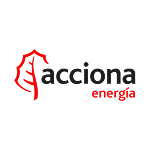
Spain-based ACCIONA Energía has developed GreenH2chain in collaboration with FlexiDAO the world’s first blockchain platform for certifying green hydrogen. It enables real-time tracking of hydrogen’s origin and carbon footprint across the entire value chain. The platform is currently used in Mallorca’s Power to Green Hydrogen project and will extend to all of ACCIONA’s future renewable hydrogen efforts. Additionally, ACCIONA has partnered with IKEA to install EV charging stations across Spain, powered by 100% renewable energy verified by its blockchain platform Greenchain.
3. Enel Group
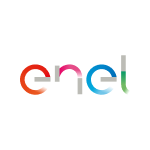
The Italian utility company Enel has developed blockchain application scenarios for medium and low voltage networks, peer-to-peer energy trading and decentralised payment systems in micronetworks. The company’s innovative team is actively testing how distributed ledger technology can enable renewable energy transactions and improve network stability. By encouraging startups to develop blockchain applications jointly, Enel has formed an ecosystem of partners for implementing solutions in European energy markets.
4. Iberdrola Group
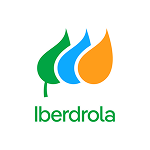
The Iberdrola Group uses blockchain to verify in real time that the energy supplied to customers is produced from renewable sources. This initiative increases consumer confidence in “green” energy and supports Iberdrola’s strategy to create a clean and intelligent energy system.
5. SunContract

The Slovenian company SunContract manages a blockchain-based P2P platform that allows consumers to buy and sell renewable energy directly. The platform has more than 5,000 active users, eliminates intermediaries and provides people with the opportunity to manage their energy supply independently. The company’s goal is to create a global decentralised and environmentally sustainable energy sharing market.
6. Power Ledger

Australian company Power Ledger has developed a blockchain platform for energy trading, providing users with the opportunity to choose their preferred energy sources. In 2020, Power Ledger, together with the French supplier ekWateur, began implementing the solution in Europe, and in 2021, it switched from Ethereum to Solana to reduce energy consumption and speed up transactions. The company continues to innovate in network management, energy tracking and local trade.
7. WePower
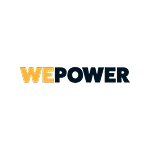
WePower connects renewable energy producers directly with customers through tokenised smart contracts. The company, based in Australia and cooperating with the Japanese conglomerate Marubeni, allows users to purchase “green” energy in advance at fixed prices using Ethereum-based tokens. The model simplifies procurement and opens up new investment opportunities for enterprises and individuals.
8. Engie
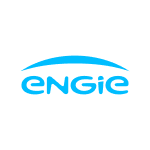
French energy leader Engie has invested more than 1.5 billion euros in digital transformation, where blockchain plays a key role. The company uses the technology to optimize energy distribution, increase the transparency of REC trade and support the charging infrastructure of electric vehicles. Engie is also researching blockchain to automate consumption tracking and compliance reporting.
9. Shell

Shell carries out pilot projects on the application of blockchain in the field of sustainability and operational efficiency. The company has developed digital passports to track the life cycle of equipment and, together with Accenture and Amex GBT, launched the Avelia system for monitoring SAF (sustainable aviation fuel) based on blockchain. Shell strives to strengthen confidence in low-carbon aviation solutions by ensuring full traceability of fuel from production to use.
10. Siemens Energy

Siemens Energy uses blockchain to issue Green Energy certificates containing metadata, including emissions, location and time stamp data. This increases the transparency of the entire energy supply chain. In addition, their “automated pay-per-use” model allows you to invoice based on actual consumption, offering a fairer and more productively focused pricing system.
Top 10 Successful Real-World Blockchain Projects in Energy
Blockchain is no longer just a buzzword in energy innovation, it’s being used in real, tangible ways to improve how electricity is generated, traded, and tracked. Across the globe, energy startups and industry giants alike are deploying blockchain to cut costs, support clean energy, and simplify complex systems. Here are ten real-world projects that are pushing the boundaries of what’s possible.
1. Conjoule

Conjoule is helping change how rooftop solar owners interact with energy markets. Instead of selling excess power back to the grid, producers can trade directly with public-sector institutions and corporations. The platform connects solar panels, smart meters, and the grid using blockchain for full transaction transparency and automation. The result? Easier local energy trading and more value for both buyers and producers.
2. Drift
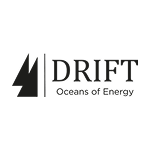
Seattle-based Drift implements an innovative approach to energy retail, combining blockchain, artificial intelligence and high-frequency trading. Customers can choose their preferred energy sources and suppliers, and the system automatically manages supply and demand almost in real time. Blockchain provides accurate billing and secure transactions, and platform analytics based on usage models optimises pricing and energy distribution.
3. Greeneum

Greeneum has created a decentralised platform that allows you to invest in renewable energy projects by owning tokens. The platform is focused on accelerating the introduction of “green” energy, in particular solar. Token holders become project participants and receive a share of the income from solar installations. Blockchain technology is used to certify the energy source and manage the investment life cycle.
4. Grid+
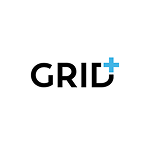
Grid+ gives consumers access to wholesale electricity markets, something traditionally reserved for utilities. Through its Ethereum-based system and smart hardware devices, users can purchase power directly and at lower costs. This setup removes the need for intermediaries, reduces transaction friction, and allows energy use and payments to be fully automated on the blockchain.
5. Grid Singularity & Energy Web Foundation
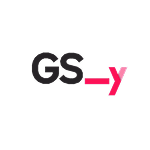
Working closely with the Rocky Mountain Institute, Grid Singularity helped launch the Energy Web Foundation, one of the most influential players in blockchain energy tech today. Instead of building a product, they focused on infrastructure: developing open-source blockchain tools for identity, certification, and energy trading. Their goal is to speed up decentralized energy adoption across borders and systems.
6. LO3 Energy
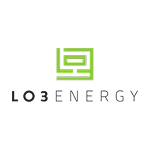
LO3 Energy attracted public attention with the Brooklyn Microgrid project, where neighbours exchange solar energy directly. This is one of the most famous examples of blockchain-based utility energy. The system reliably records each transaction, provides settlements through smart contracts and maintains local energy independence by retaining energy production and consumption within the community.
7. Power Ledger

The Australian company Power Ledger has made significant progress in peer-to-peer energy trading, tracking carbon credits and renewable energy certification. The platform operates in several countries and allows users to choose their electricity sources. Initially built on the Ethereum blockchain, Power Ledger switched to Solana to reduce energy consumption and speed up transactions, making the technology as environmentally friendly as the “green” energy it supports.
8. Sun Exchange

Sun Exchange combines solar power and crowdfunding in a clever way. The platform lets people buy individual solar cells for schools, factories, and clinics in sunny but underserved parts of the world. Revenue from the energy these cells generate is distributed to the owners via blockchain. It’s a win-win: clean energy for communities and long-term returns for small-scale investors.
9. WePower
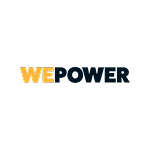
With WePower, renewable energy producers can tokenize their future output, selling electricity as digital contracts in advance. Buyers from businesses to individuals can purchase exactly what they need, and any excess energy can be resold. Blockchain ensures that all trades are transparent and settled automatically, helping stabilize both price and supply in renewable energy markets.
10. Electron
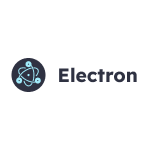
Electron initially focused on simplifying the transition of electricity suppliers in the UK, but today it is a full-fledged platform for energy trading and network balancing. The company’s technology creates dynamic markets where distributed energy resources – from home batteries to charging stations for electric vehicles – are coordinated for maximum efficiency. Blockchain ensures the reliability and manageability of these complex processes, increasing the transparency and accuracy of operations.
Key Challenges of Using Blockchain in the Energy Sector
Blockchain has a high potential to transform the energy sector, but faces technical, regulatory, financial and operational obstacles. Their solution is necessary to create smarter, more environmentally friendly and transparent energy systems.
1. Scalability and Energy Consumption
Most traditional blockchain networks, especially those built on the Proof-of-Work algorithm, consume a significant amount of electricity, which creates a paradox for technologies focused on improving energy efficiency. In addition to environmental problems, the blockchain faces the challenge of scalability: many public networks are not yet able to process the volume of transactions and their speed in real time, which are necessary for the operation of smart contracts, high-frequency energy trading or network operations. This limits the possibility of integrating technology into large-scale energy systems without significantly increasing productivity.
2. Regulatory Complexity
Energy markets are one of the most strictly regulated sectors worldwide. The decentralised nature of blockchain often conflicts with the rules created for centralised systems. Since legislation and regulatory requirements vary from country to country and region, scaling blockchain solutions becomes difficult. The lack of clear regulation of digital assets, data processing and compliance with smart contracts further complicates their implementation.
3. Infrastructure Limitations
The deployment of blockchain solutions is associated with high costs. They include software development, equipment modernisation, cybersecurity, staff training and subsequent maintenance. For many energy suppliers, especially small and medium-sized enterprises, the return on investment remains uncertain. Without reliable profitability models, attracting financing and supporting stakeholders can be difficult.
4. Financial Barriers
The introduction of blockchain into smart grids and P2P energy markets increases the level of operational complexity. Real-time payment management, platform compatibility and processing of thousands of microtransactions per second create serious challenges. Existing outdated billing systems and traditional pricing models complicate processes even more, especially when they do not support dynamic decentralised energy flows.
5. Operational and Transactional Complexity
The introduction of blockchain into smart grids and P2P energy markets increases the levels of operational complexity. Real-time payment management, platform-to-platform compatibility and processing of thousands of microtransactions per second create serious challenges. Existing outdated billing systems and traditional pricing models further complicate processes, especially when they do not support dynamic decentralised energy flows.

The future of blockchain
1. Direct energy trading platforms
Peer-to-peer markets enable individuals and businesses to buy and sell renewable energy, bypassing traditional intermediaries directly. Smart contracts automate transactions, reduce costs and allow prosumers to monetise excess production of solar or wind energy.
2. Optimized solutions for microgrid management
Integrated blockchain platforms enable local energy networks and seamless peer-to-peer trading. Such solutions increase energy independence, grid resilience during outages, and optimize the distribution of renewable energy at the neighborhood level, reducing transmission losses.
3. Renewable energy certificate (REC) markets
Blockchain platforms for REC provide unchanging evidence of production and consumption of “green” energy. They prevent fraud and double counting, allowing companies to demonstrate their commitment to sustainable development transparently.
4. Automated demand management
Smart contract-based systems automatically balance electricity consumption, stimulating the adjustment of utilisation during peak periods. This increases network stability, reduces costs and optimises the integration of renewable sources with intelligent load management and dynamic pricing.
5. Insightful analysis of energy data
Blockchain platforms securely collect and analyse energy consumption data from smart metres, IoT devices and network sensors. This allows you to optimise operations, provide predictive maintenance and increase energy efficiency in the residential, commercial and industrial sectors.
6. Effective markets for carbon footprint compensation
Transparent blockchain marketplaces provide proven carbon credits with full accountability and avoidance of double counting. Companies can acquire genuine compensation, track carbon footprint reduction and participate in global climate initiatives.
7. Blockchain-based energy audits
Assessment platforms use blockchain for reliable and secure reporting on the energy efficiency of facilities. This increases data transparency, optimises consumption and opens access to green financing opportunities.
8. Transparent supply chain management
Blockchain provides end-to-end tracking of energy resources, equipment and materials throughout the supply chain. This increases accountability, reduces fraud risks and guarantees the authenticity of renewable energy components and sustainable materials.
9. Decentralized energy insurance platforms
Peer-to-peer blockchain-based insurance networks provide flexible and cost-effective coverage of renewable energy projects. They reduce financial risks, reduce insurance premiums by pooling risks and accelerate project launch.
10. Secure energy asset management
Blockchain platforms allow you to track and manage solar panels, wind turbines and energy storage systems. They provide secure ownership, maintenance and performance accounting, which optimises the use of assets and increases the efficiency of distributed energy portfolios.
Build Your Own Blockchain-Powered Energy Solution with Us
Blockchain is transforming the energy sector, and now is the perfect time to become a part of it. Whether you want to launch a peer-to-peer trading platform, increase transparency and energy traceability or automate network management through smart contracts, we will help you bring your idea to life.
We create custom blockchain solutions that are safe, scalable and tailored to your goals: from tokenisation of energy assets and verification of carbon credits to building decentralised energy markets.
Our development process is focused on your needs. We accompany every stage – from concept to launch of a fully functional solution, providing access to experienced developers, integration without delays and flexible delivery times.
If you have an outdated system, we can integrate blockchain components into your existing infrastructure to add new levels of security, transparency and efficiency without starting from scratch.
Contact us to learn how blockchain can transform your energy operations.
Conclusion
Blockchain opens up new opportunities for the energy sector, making processes more transparent, safe and efficient. The technology helps to optimize energy distribution, control its origin and introduce innovative trade models, promoting the transition to sustainable and green energy. At the same time, like any innovation, blockchain faces a number of challenges: the issues of scalability, regulation, infrastructure modernisation and cost remain key obstacles.
Nevertheless, advanced companies and startups demonstrate that the practical application of blockchain in the energy sector is already bringing tangible results. As technologies improve and the regulatory framework is formalised, we can expect a wider implementation. For organisations striving for leadership in the field of clean, decentralised energy, now is the time to evaluate the opportunities that the blockchain provides.
